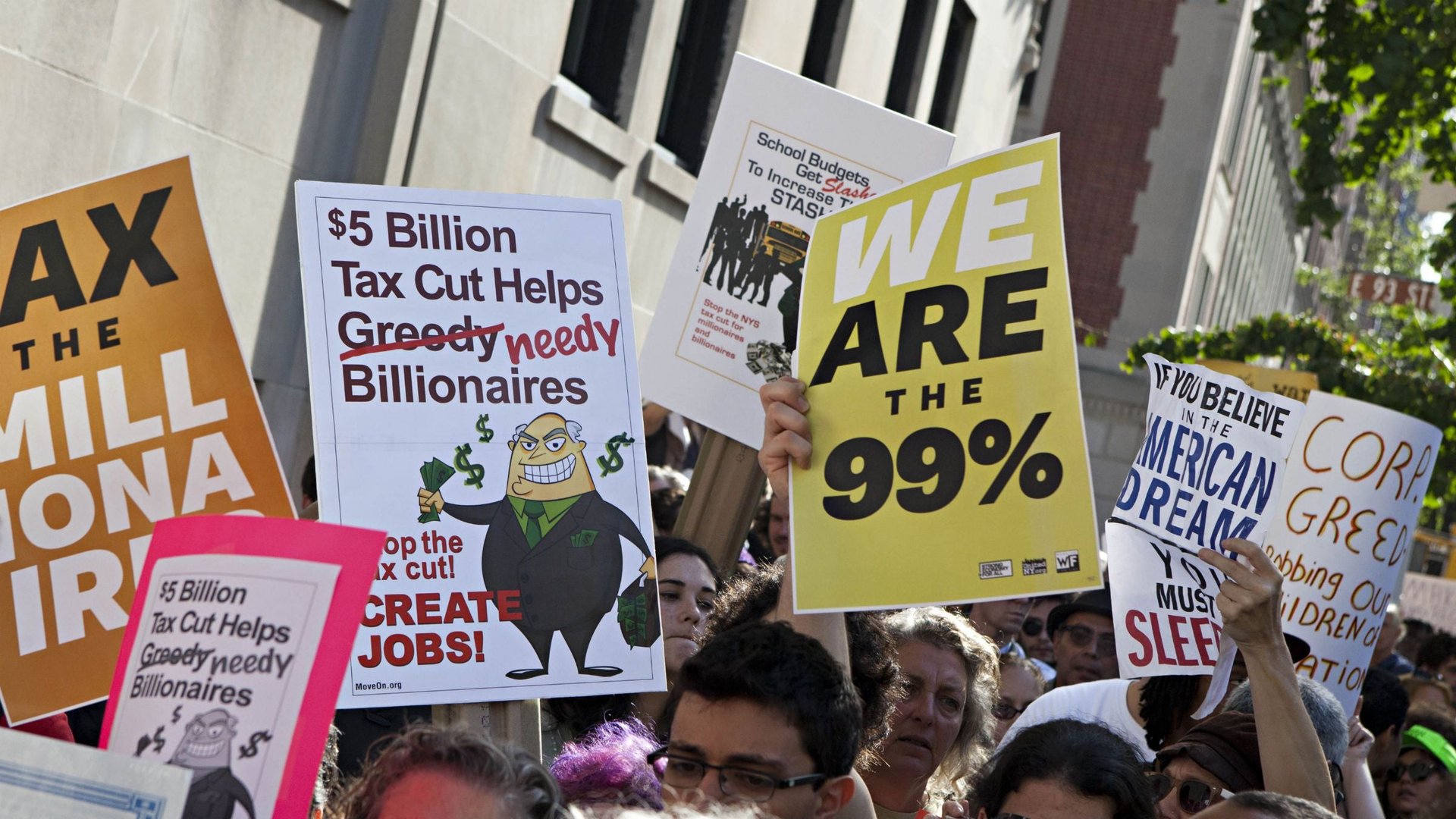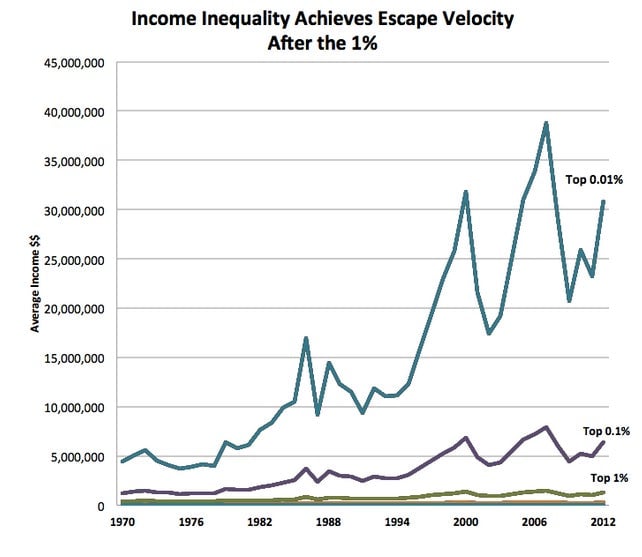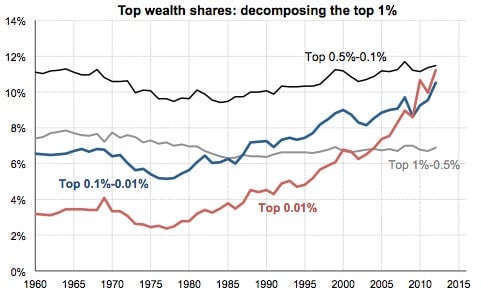What we all got wrong about the 1%—it’s actually the 0.01%
For years, I’ve been making the same embarrassing mistake about US economic inequality. Sorry.


For years, I’ve been making the same embarrassing mistake about US economic inequality. Sorry.
I’ve written, over and over, that the most important divide in our wealth disparity was between the 1% and the 99%. For example, when I compared the evolution in investment income since the late 1970s, I often imagined a graph like this from the Economic Policy Institute, showing the 1% flying away from the rest of the country.

It turns out that that graph is somewhat misleading. It makes it look like the 1 percent is a group of similar households accelerating from the rest of the economy, holding hands, in unison. Nothing could be further from the truth.
A few weeks ago, I shared this graph (from the World Top Incomes Database) showing how the top 0.01%—that’s the one percent of the 1 percent—was leaving the rest of the top percentile behind.

It’s even more egregious than that. An amazing chart from economist Amir Sufi, based on the work of Emmanuel Saez and Gabriel Zucman, shows that when you look inside the 1 percent, you see clearly that most of them aren’t growing their share of wealth at all. In fact, the gain in wealth share is all about the top 0.1 percent of the country. While nine-tenths of the top percentile hasn’t seen much change at all since 1960, the 0.01 percent has essentially quadrupled its share of the country’s wealth in half a century.

It turns out that wealth inequality isn’t about the 1% vs. the 99% at all. It’s about the 0.1% vs. the 99.9% (or, really, the 0.01% vs. the 99.99%, if you like). Long-story-short is that this group, comprised mostly of bankers and CEOs, is riding the stock market to pick up extraordinary investment income. And it’s this investment income, rather than ordinary earned income, that’s creating this extraordinary wealth gap.
The 0.1% isn’t the same group of people every year. There’s considerable churn at the tippy-top. For example, consider the ”Fortunate 400,” the IRS’s annual list of the 400 richest tax returns in the country. Between 1992 and 2008, 3,672 different taxpayers appeared on the Fortunate 400 list. Just one percent of the Fortunate 400—four households—appeared on the list all 17 years.
Now there’s your real 1%.
This post originally appeared at The Atlantic. More from our sister site: